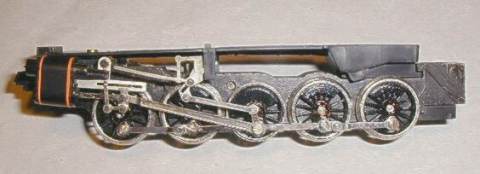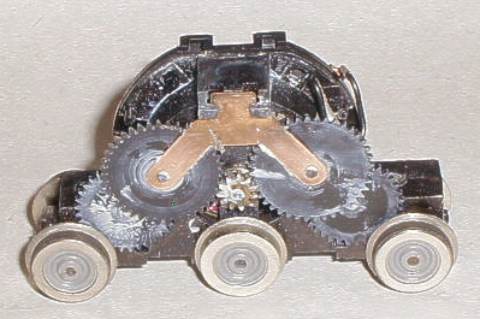Most Hornby locomotives
use the axle bearings as part of the electrical path for the
current from the track rails to the armature of the motor. Oil
in these bearing will act as an insulator and restrict the electrical
current flow. Also, the motor commutator is often close to a
motor bearing. Any oil that gets onto the commutator is very
bad news indeed. This oil combines with the carbon dust from
the carbon brushes to produce a conductive paste that shorts
out the commutator. This then overheats the commutator causing
burning of the plastic insulators and a motor that gives off
smoke. If not treated this can result in a burned out motor
which is scrap.
Another reason to
lubricate lightly is that oil can get onto your track rails
and contaminate your whole fleet and layout. This is best avoided
as you'll have a large clean-up operation to contend with.
There are several
steps to correctly lubricate your Hornby locomotive:
1. Identify
the electrical path of your locomotive - work
from the track rails to the motor armature for each of your
locomotives. Bear in mind that for some steam locomotives both
the tender and the main loco chassis are used. On some diesel
and electric locomotives both loco bogies are used.
2. Clean the right items
- apply no lubrication to the bearings used in the electric
path and clean off any oil, dirt or grease that might be present.
Where an axle bearing has been used as an electrical joint Hornby
has used self lubricating materials that do not need lubrication
(at least at the speeds we're dealing with). Remove any oil
and dirt from the motor commutator and especially from between
the commutator segments.

